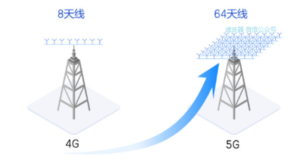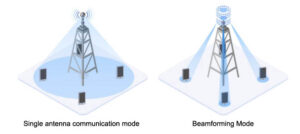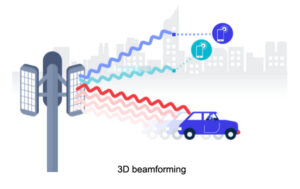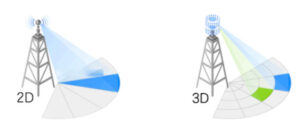1. What is Massive MIMO?
Massive MIMO, the full English name is: massive multiple input multiple output. Because its English name is too long, it is called “massive MIMO” for short. Its Chinese name, which is translated from English, is called large-scale multiple input multiple outputs. For convenience, they are directly called “Massive MIMO”
Origin: the preliminary concept of Massive MIMO wireless communication was first proposed by Dr. Marietta of Bell Labs in 2009. The Massive MIMO we are talking about today is not a new technology. It is an expansion and extension of MIMO technology. [MIMO has been widely used in the 4G era] different from the traditional 4G MIMO with up to 8 antenna channels, large-scale MIMO realizes 16 / 32 / 64 channels in 5g.

2. Massive MIMO technology
In fact, massive MIMO is the beamforming of a large number of antennas. [explanation: beamforming is a technology to adaptively adjust the radiation pattern of an antenna array according to specific scenes] it may be a little confused after reading the explanation, so let’s go on to talk about beamforming!
Beamforming: through advanced antenna technology on mobile devices and network base stations, wireless signals can be concentrated in specific directions rather than spread to wide areas. Just like the difference between a flashlight and a laser pen, the former can illuminate people in the whole room, while the latter can continuously point to or track a single user.

With the increase in the number of antennas in MIMO system, beamforming becomes “3D beamforming”. 3D beamforming technology can generate user-oriented horizontal and vertical beams to improve the data transmission rate and capacity of all users, including those on the top floor of high-rise buildings.

With the feedback of the mobile terminal, the beam can find any point in space. Therefore, whether users move on the street or between different floors of buildings, they can be connected to the network through concentrated beams. In addition, the slender direct beam can also reduce the interference between beams in different directions.

3. Advantages of Massive MIMO
(1) More accurate 3D beamforming to improve the received signal strength of the terminal.
Different beams have their own very small focus area, and the user is always in the best signal area in the small area.
(2) At the same time, the same frequency serves more users and improves the network capacity.
Because the independent narrow beam coverage can be formed for different users in the coverage space, the antenna system can transmit the data of different users at the same time, which can improve the system throughput and network capacity dozens of times.
(3) Effectively reduce inter-cell interference
The beam of the antenna is very narrow and can accurately provide coverage for users. Therefore, the interference to the collar area can be greatly reduced.
(4) Better coverage of remote or proximal cells
The degree of freedom of the beam in the horizontal and vertical directions can bring flexibility and performance advantages in continuous coverage.
